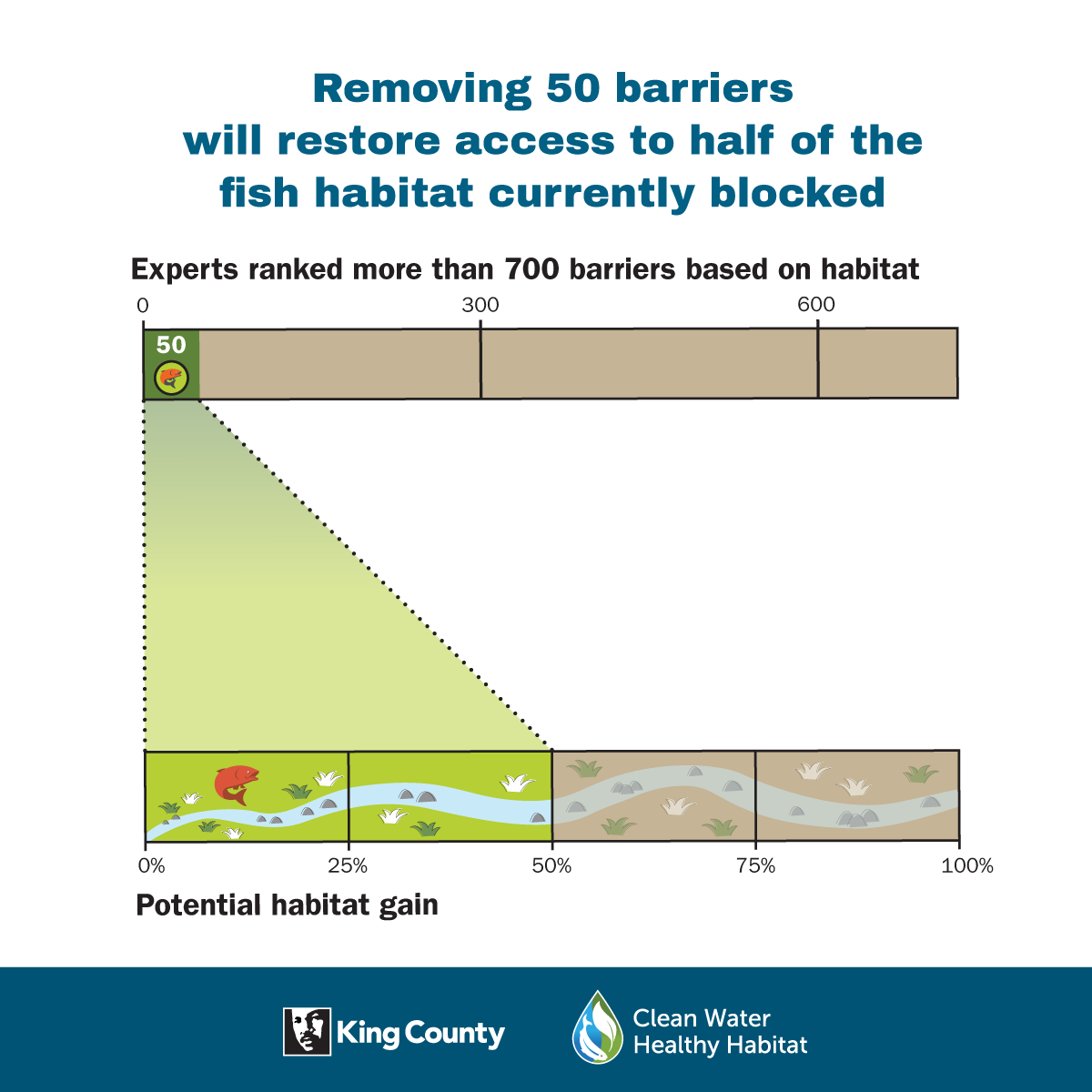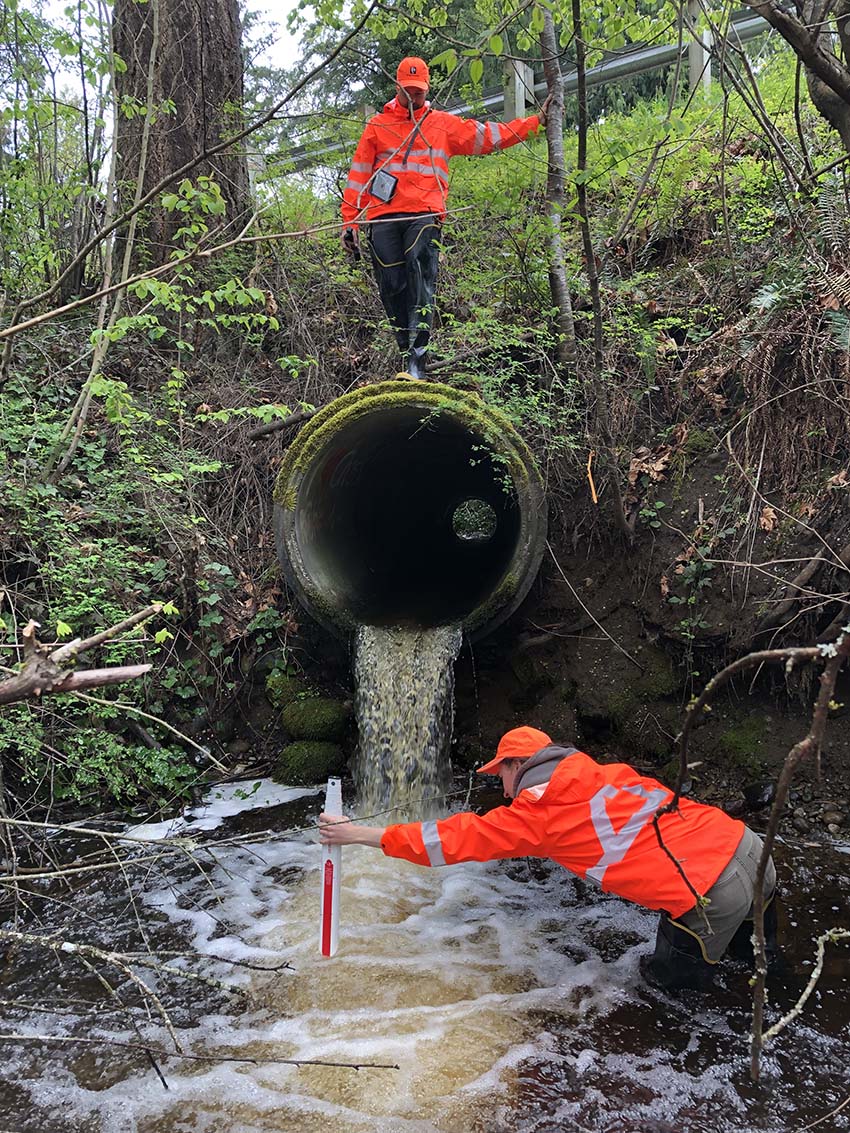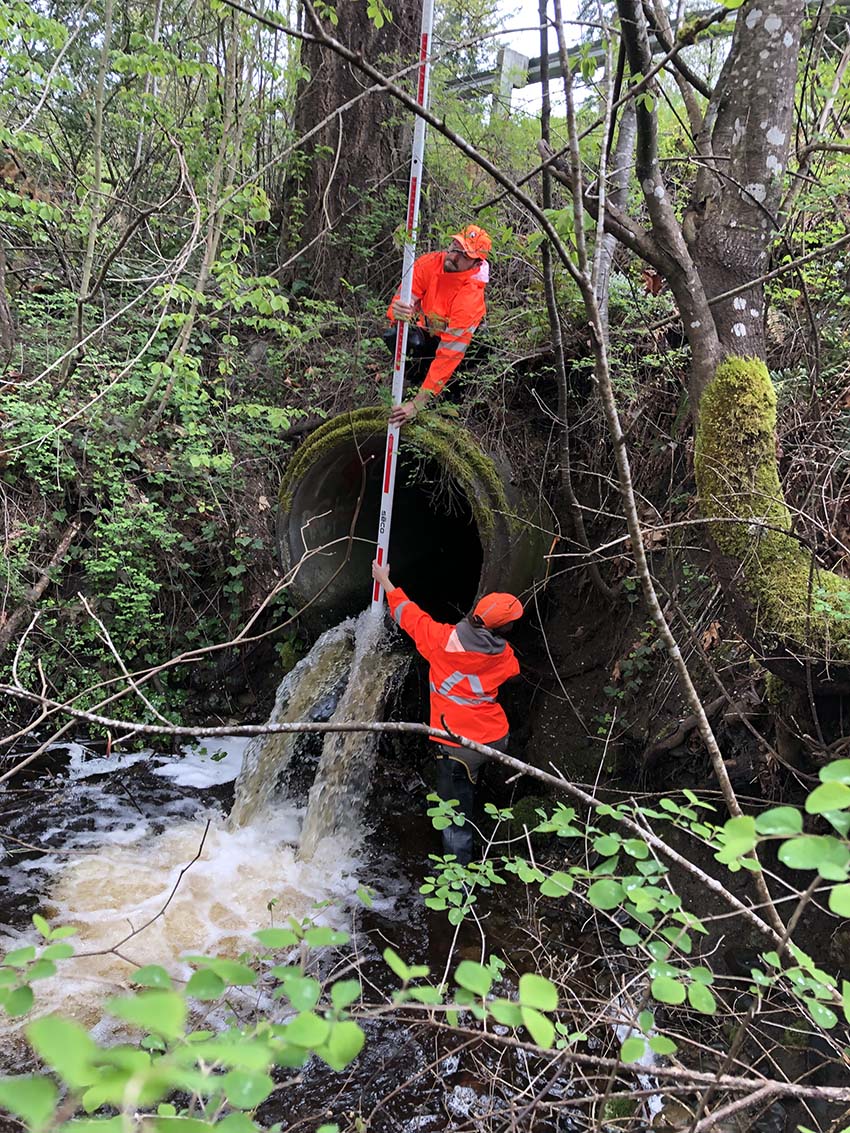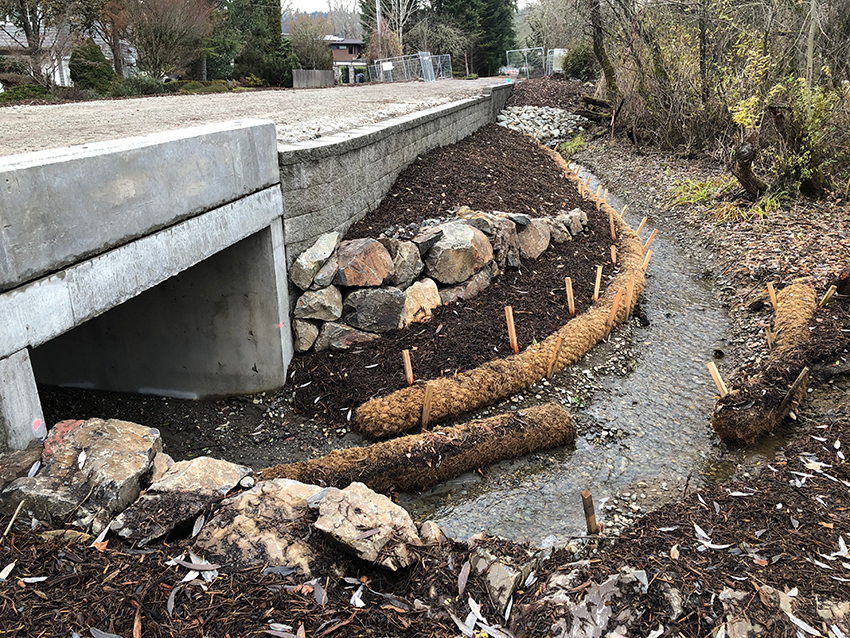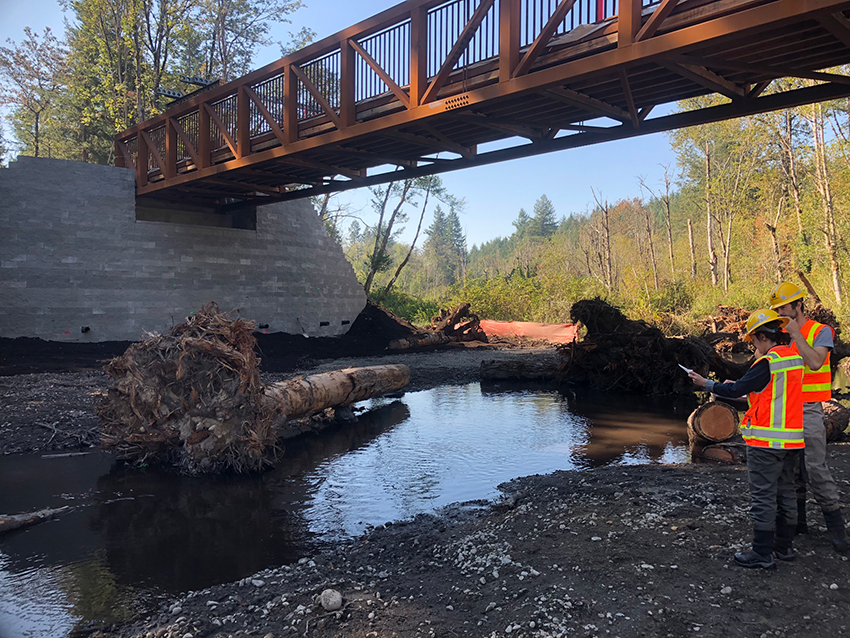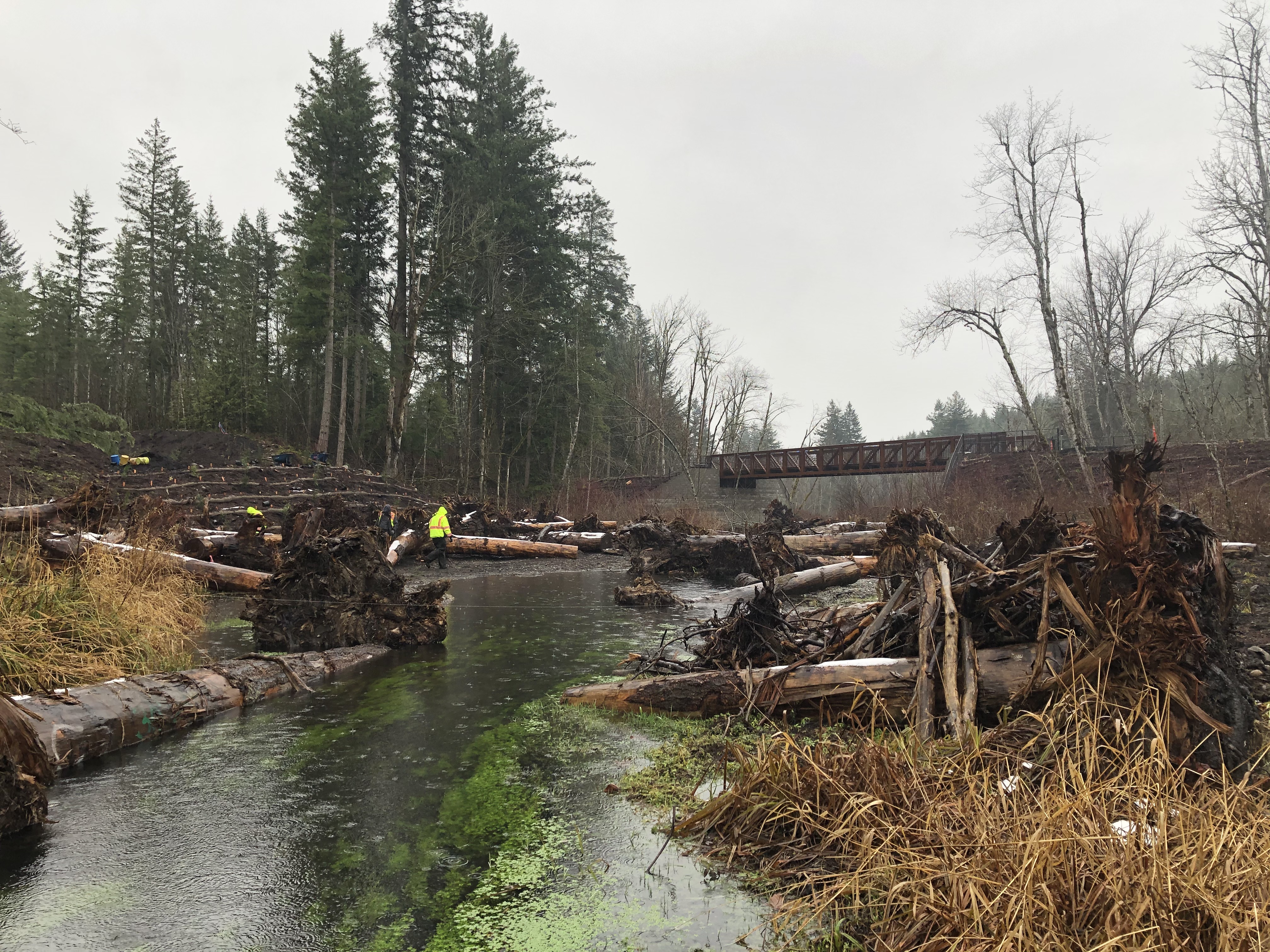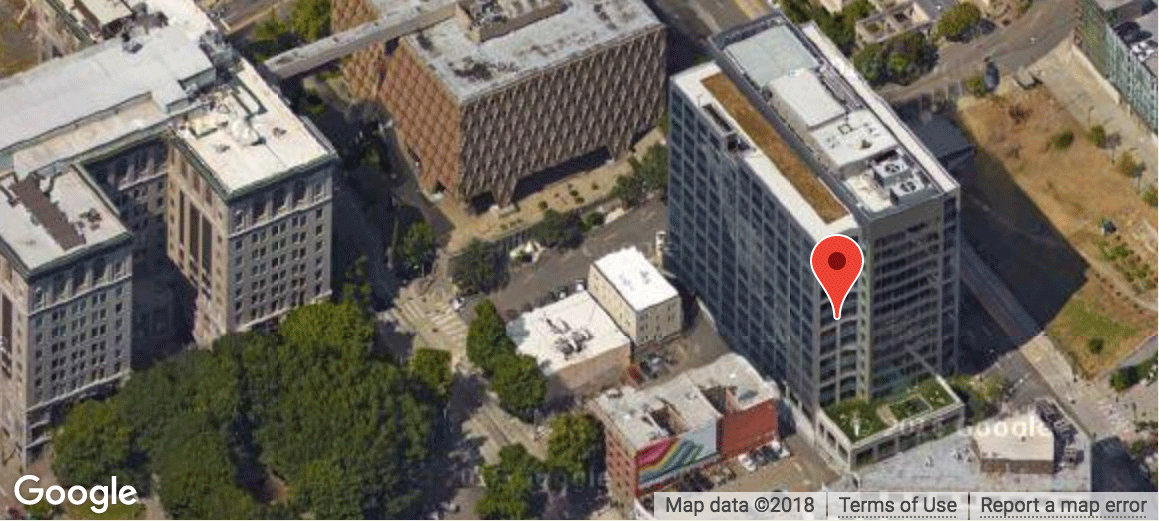Upstream salmon habitat restored by King County this year, will soon begin a decade of projects to open 250 more miles of streams and rivers
Summary
Delivering on a direction by Executive Dow Constantine to restore access to the best habitat for the most fish as quickly as possible, this year King County completed seven projects and will soon begin a decade of new projects that will restore access to at least half of the habitat currently blocked by county-owned roads and trails.
Story
King County Executive Dow Constantine announced significant gains this year by King County to restore access to high-quality salmon habitat, and that the county will soon begin a decade of projects to reopen at least 50% of the stream habitat currently blocked by county-owned roads and trails. The team of experts guiding King County’s Fish Passage Restoration Program estimates that by 2032 these projects will allow access for native salmon to freely swim to more than 250 stream miles.
“Restoring access to the best habitat for the most salmon as quickly as possible is now more than a goal, objective, or strategy – it's a measurable outcome,” said Executive Constantine. “We will build on the strong progress we've made this year as we begin a decade of determined work that will produce lasting results for native salmon and the Puget Sound orcas that rely on them, and for the generations of King County residents that will follow.”
The seven projects King County completed this year included four along East Lake Sammamish, two on Ravensdale Creek, and one east of Auburn on Charlie Jones Creek, a tributary to the White River. Executive Constantine also included $29 million in the 2023-2024 budget approved by the King County Council in November to fund additional fish passage restoration projects, including:
- Completing construction of four fish passage projects, restoring access to 17 miles of upstream habitat.
- Designing 20 fish passage projects that will all be completed by the end of 2028, restoring access to 96 miles of upstream habitat.
- Restoring fish passage at all county barriers that prevent Lake Sammamish kokanee salmon from swimming to upstream habitat by the end of 2023.
"Seeing salmon return to their birthplace to complete the cycle of life is a moving experience that we all cherish. We are making great progress restoring access to vital upstream habitat so that future generations will continue to experience this treasured tradition," said King County Councilmember Rod Dembowski. "We owe it to the first peoples of this region, and to future generations, to undo as much of the damage done during the last 150 years to these waterways as possible. This work will give our iconic salmon and the Orcas that rely on them the chance to thrive again."
“I am thrilled to have joined my Council colleagues and Executive Constantine in supporting and investing in habitat restoration across King County. Both incorporated and unincorporated communities have benefitted greatly from these efforts, which includes work on fish passage and habitat restoration along Lake Sammamish,” aid King County Councilmember Sarah Perry. “As we enter the new year, I also look forward to continuing to support the County's Clean Water Healthy Habitat initiative and ensuring fish populations are thriving and self-sustaining.”
The restoration work stems from Executive Constantine's direction in 2018 for the Department of Natural Resources and Parks to lead an inventory of barriers to fish habitat and determine which projects would restore access to the most habitat as quickly as possible.
Through a three-year study, King County scientists and engineers identified the best opportunities to achieve this goal. The field team inspected more than 3,000 locations where habitat is possibly blocked by county-owned roads and trails and ranked more than 700 of the identified barriers. They determined that rectifying around 5% of those barriers - about 50 restoration projects - would reopen access to at least half the habitat currently blocked.
Next year will be the first in a 10-year work plan that prioritizes these restoration projects. The county will complete the work by the end of 2032. The estimated cost is about $150 million.
The scientific study put King County in a strong position for unprecedented federal investments announced in October by U.S. Transportation Secretary Pete Buttigieg at the site of one of projects recommended by the King County field team.
Installing modern culverts that provide slower streams, better habitat for native salmon
Most barriers to salmon habitat are metal or concrete pipes, known as culverts, that were installed below roads, trails, and railroads during the 20th century so streams could flow underneath. Many of the older culverts are so long, straight, and steep that they prevent fish from swimming through them.
Some culverts resemble firehoses, pushing water at a high velocity and making it nearly impossible for salmon to swim through. In other cases, flows from the culvert eroded a deep hole in the streambed below, making it difficult for fish to jump high enough to swim further upstream.
Modern culverts are designed more like arches than pipes and allow streams to naturally flow underneath roads and trails with no barriers for salmon or wildlife.
Relevant links
- Fish Passage Restoration Program
- VIDEO: Identifying the best opportunities to remove barriers to salmon habitat
- VIDEO: Progress on removing barriers to habitat
- TRACKS: An interactive map tracking progress on environmental stewardship
Quotes
Restoring access to the best habitat for the most salmon as quickly as possible is now more than a goal, objective, or strategy – it's a measurable outcome. We will build on the strong progress we've made this year as we begin a decade of determined work that will produce lasting results for native salmon and the Puget Sound orcas that rely on them, and for the generations of King County residents that will follow.
Seeing salmon return to their birthplace to complete the cycle of life is a moving experience that we all cherish. We are making great progress restoring access to vital upstream habitat so that future generations will continue to experience this treasured tradition. We owe it to the first peoples of this region, and to future generations, to undo as much of the damage done during the last 150 years to these waterways as possible. This work will give our iconic salmon and the Orcas that rely on them the chance to thrive again.
I am thrilled to have joined my Council colleagues and Executive Constantine in supporting and investing in habitat restoration across King County. Both incorporated and unincorporated communities have benefitted greatly from these efforts, which includes work on fish passage and habitat restoration along Lake Sammamish. As we enter the new year, I also look forward to continuing to support the County's Clean Water Healthy Habitat initiative and ensuring fish populations are thriving and self-sustaining.
For more information, contact:
Doug Williams, Department of Natural Resources and Parks, 206-477-4543

 Translate
Translate
